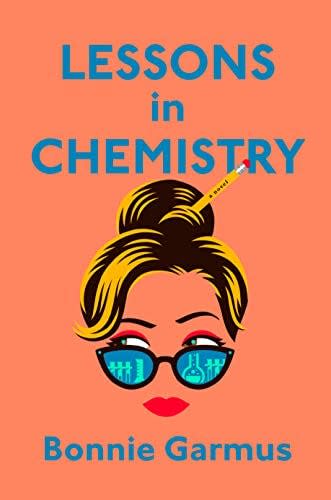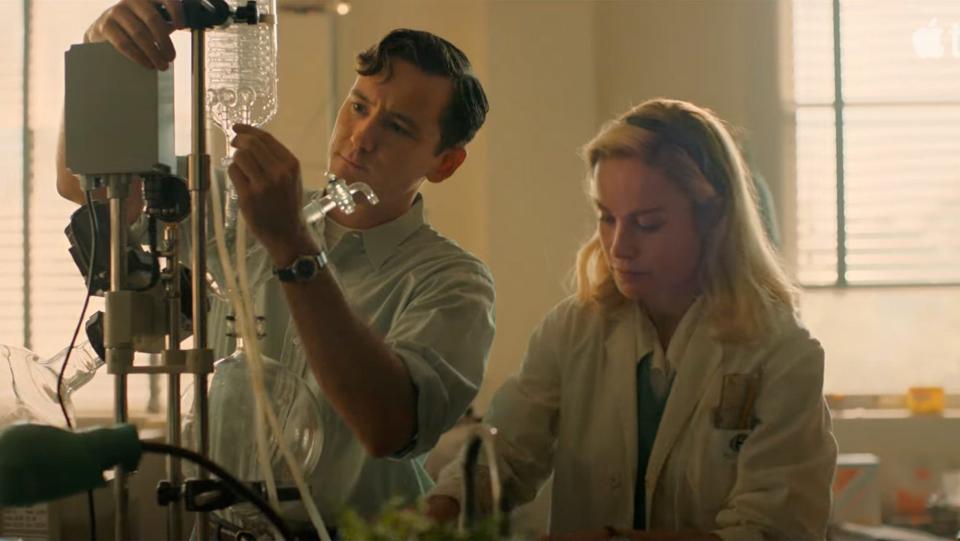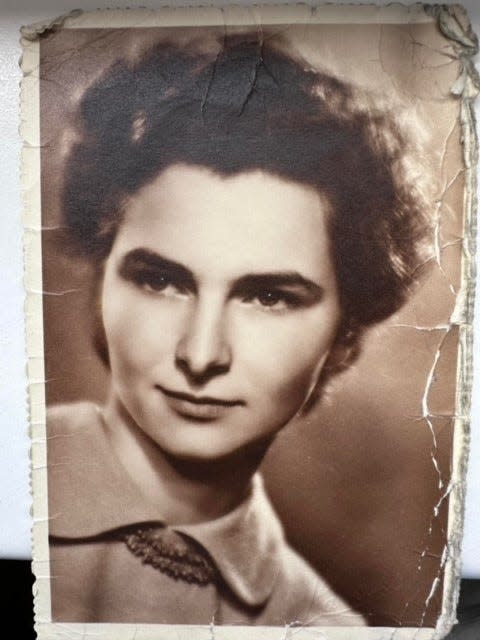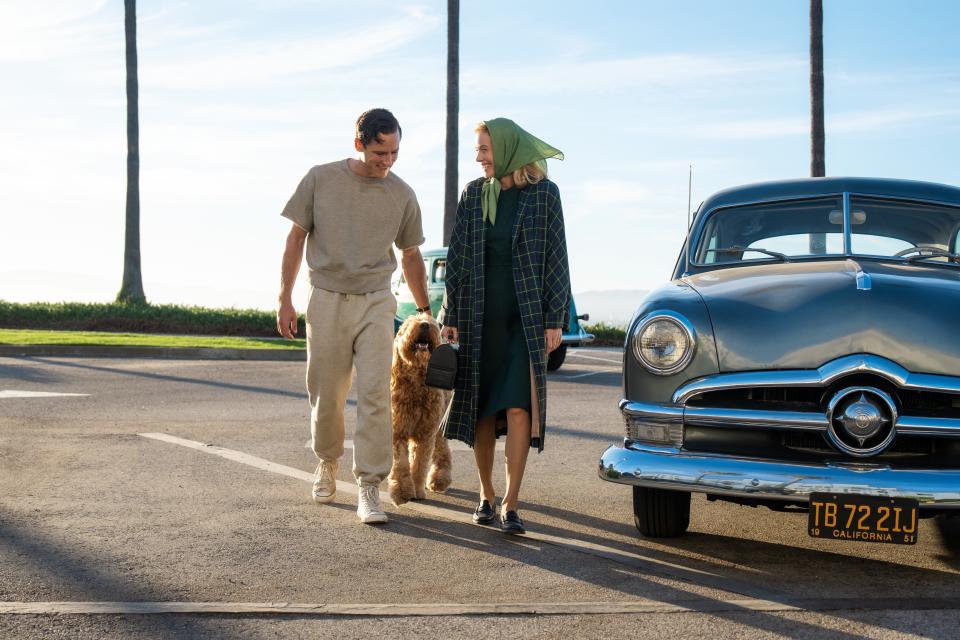New York book club gets 'Lessons in Chemistry' from Tallahassee scientist
- Oops!Something went wrong.Please try again later.
Our book group, 10 retired women living on the Upper West Side of Manhattan, three of us former residents of Tallahassee, recently read "Lessons in Chemistry," by Bonnie Garmus. It’s a rousing tale set in the 1950s and '60s in which a brilliant, socially awkward lab chemist faces down a series of misogynists at work.

The story, soon to be released as a dramatic series starring Brie Larson, made us curious about the experiences of real women chemists of that era, so we invited Kamila Kavka, a Tallahassee resident who spent decades as a lab chemist, to share her perspective.
Although we didn’t know it at the time, Lemoyne Art Gallery chose Kamila as one of their “Women Among Us” for 2023, recognizing her as a woman over 65 who made a significant contribution to her field. The exhibit opens Sept. 28.
2021 exhibit: 'Women Among Us': LeMoyne exhibit celebrates 17 who 'persevered and prospered'
Kavka's story, edited for brevity and clarity, begins with a harrowing Cold War escape.

Sally Gertz: Hi Kamila, can you tell me how you become a lab chemist?
Kamila Kavka (born 1936): In Czechoslovakia, those of us who wanted to go to college had to choose one area to study. The high school teacher I liked best taught the periodic table so I chose a program at the University of Chemistry and Technology with three years of core science classes and two years of organic chemistry.
Many women studied science, but not many opted for the organic chemistry track, so I was a bit unusual. Upon graduating, the state assigned me to a job overseeing manufacturing, which is what they wanted people with technical training to do, but I preferred research and when the institute where I’d been working part time offered me a position, I was allowed to go there instead.

Q: In the novel we read, the protagonist meets her romantic partner when she steals his test tubes. Your husband also was a chemist. How did you meet him?
Kavka: I met my husband soon after I arrived at the University. Our education was free, but we paid for our glassware, which we washed and put in the oven to dry after using. He was in a hurry one day and stole mine, which meant I had to buy new supplies. I examined the lab’s sign-in log and it was obvious from the timing that he did it, but he never confessed. Five years later we began dating.
Moving to America
Q: You eventually ended up in the United States. How did that happen?
Kavka: In 1962, I volunteered to be a translator at an international science symposium in Prague. The border was closed, so for most of us it was our first time seeing people from abroad — seeing, we joked, that they, too, had eyes, ears and noses. I enjoyed the interaction and in May 1968 when I was 32, I got permission to spend a year at a lab in Yvette, France, outside of Paris, a few steps from where Kissinger was meeting with world leaders trying to end the Vietnam War.
My husband and 5-year-old daughter were still in Czechoslovakia. When a Czech citizen travelled abroad the family had to stay behind to discourage defection, but because I was working in France for an entire year they were allowed to visit. So we were all in France when the Russian tanks rolled into Prague in August 1968.
We struggled with the decision about what to do. My mother-in-law was still in Prague and was being treated for ovarian cancer, but we decided we had to focus on our daughter’s future so we went to the US embassy, day after day, seeking to immigrate. People with chemistry degrees received preference and eventually we were granted visas and came to the US.
Lab culture
Q: Tell me about the labs where you worked. What was the workplace culture?
Kavka: In Prague, I worked at the Research Institute of Healing Arts — a wonderful name, right? In a big field in front of the building we grew plants to use in the lab, such as vinca major (greater periwinkle), which I investigated to see if it could help with cardio vascular problems. As scientists, our biggest complaint was our isolation. Borders were closed and access to information restricted, so we couldn’t keep up with scientific developments outside of our country.
In France, a renowned professor visiting from Indiana University headed the lab. Though it was unusual for someone at his level, he spent time in the lab every day, ensuring precision in our work and getting to know us, which is how he ended up changing my life. He told me that if I could get myself and my family to the US, I could have a position in his lab in Indiana for at least a year. That offer was crucial for obtaining our visas and I ended up staying at his lab two years.
My next lab was at Monsanto in St. Louis, which had massive resources. In 1980 we opened a biotech department with 30 people and in five years it grew to 200. About half the people in the lab were women, but all the leaders (with one exception) were men.
We were building a library of DNA sequences to insert new genetic characteristics into plants like soy and corn. The first five years our research got enormous support, but we didn’t produce anything useable and the pressure became intense. What stands out most about the culture was how top-down it was. Decisions came from above and bench scientists doing the day-to-day work had little input; we kept our heads down and tried to stay out of the line of fire.
Cancer research
In the upper 1990s I took the best job of my career at a lab in the hematology department in MD Anderson in Houston, a cancer research center, where I examined blood to determine what type of chemotherapy would be most effective. It operated much differently from Monsanto.
On paper, M.D. oncologists headed the labs, but M.D.s had clinical responsibilities, too, so in reality we had broad autonomy and, as a result, were deeply invested in our projects. Creativity and collaboration flourished; you helped others because you wanted their help. Almost all the M.D.s were men, but over half the lab scientists were women.
Many of us had international backgrounds. The combination of chemistry and health backgrounds was a boon. Once a week we conferred with the M.D.s who used our lab and we had access to journals from both fields.
Rewards of collaboration

Q: What “lessons in chemistry” stick with you?
Kavka: How valuable it is for scientists to have access to global, up-to-date information; how getting to know and care about the people you work with can alter their lives for the better; how important it is to encourage collaboration, especially across specialties; how motivating it is to have autonomy for one’s own work.
The work environments that promoted these values were the most satisfactory and productive. I saw bias limit women chemists’ opportunities, especially opportunities to lead, which was upsetting, but that subplot shouldn’t crowd out the bigger story — our contributions. There were many of us in innovative labs doing vital work.
Sally Gertz and her husband, former professors at FSU (40 years in Criminology for him, 19 years at the Law School for her) were close friends with Professor Martin Kavka (Religion), which is how she got to know his mother, Kamila Kavka.
This article originally appeared on Tallahassee Democrat: New York book club gets 'Lessons in Chemistry' from Tallahassee scientist

